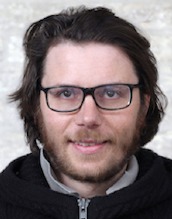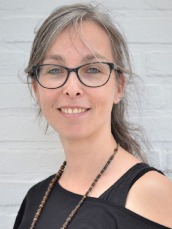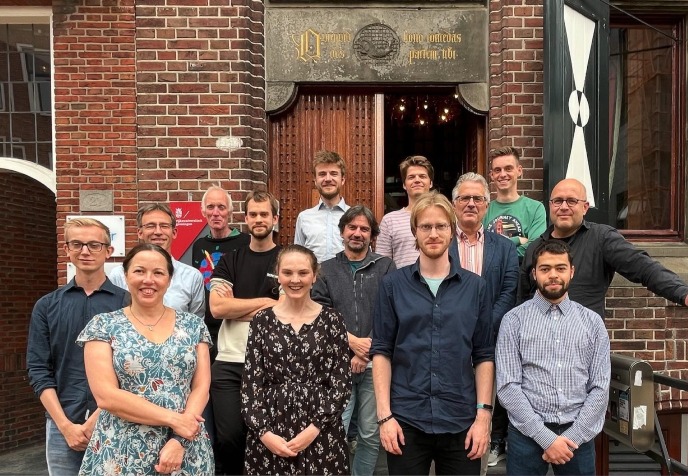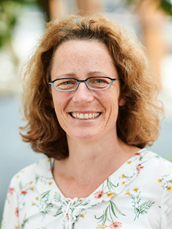NWO ENW–XL grants worth millions awarded to UG research consortia
Various UG research consortia have been awarded substantial grants by the Dutch Research Council (NWO). The Open Competition Domain Science–XL grants (ENW–XL, previously called the ENW–GROOT grants), worth a few million euros, have been awarded to various research proposals within the exact and natural sciences. The proposals include research on ‘cold’ molecules, which could teach us more about the Big Bang, and research into the emergence and abatement of urinary tract infections.
The ENW–XL grants are specifically intended for research consortia, which must involve a scientific collaboration between at least two persons. The research proposals must be curiosity- driven, unrestrained, and of a fundamental nature.
The following research consortia, involving UG academics as the main applicants, have been awarded ENW–XL grants:

Giovanni Maglia
(GBB, Faculty of Science and Engineering, main applicant) – Unravelling individual proteins using nanopores – circa €3.1 million
Co-applicants: Sonja Schmid (WUR), Cees Dekker (TU Delft)
Proteins are the workhorses of our cells. Yet we are still lacking a lot of information about these fundamental molecules of life. Under the leadership of Maglia, the team will develop new technologies on the basis of nanosensors to tackle the most important challenges in analysing proteins. Namely, counting and identifying proteins, reading their base code at the single molecular level, and solving the temporary form changes of individual proteins that underpin their function. Unravelling individual proteins by solving their sequence and functional dynamic offers an exceptional opportunity to radically improve our understanding of proteins.

Marjon de Vos
(GELIFES, Faculty of Science and Engineering, main applicant) –
Rethinking urinary tract infections: Microbial eco-evolutionary actuators and regulators – circa €3 million
Co-applicants: Janneke van de Wijgert (UMCU/UU), Justin van der Hooft (WUR), Marnix Medema (WUR), Celia Berkers (UU), Michael Seidl (UU), Jerry Wells (WUR), Rampal Etienne (UG)
Urinary tract infections are common among women. The chance of a recurring infection is significant, even after treatment with antibiotics. In addition, the microbes that cause urinary tract infections are very diverse, which increases resistance to antibiotics. Effective treatment remains impossible due to these circumstances. This research aims to change the situation by investigating the composition of microbes that cause the infection as well as the interaction between these microbes. In this way, the researchers hope to discover how a healthy microbe can become an unhealthy one, which in turn can cause urinary tract infections. The findings will be useful for the diagnosis, treatment, and prevention of infections.
The multidisciplinary team comprises microbiologists, infectious disease specialists, biologists, and chemists from various universities and research institutes.
Steven Hoekstra , Anastasia Borschevsky , Rob Timmermans , and Lorenz Willmann ( Van Swinderen Institute, Faculty of Science and Engineering, main applicants) – Using cold molecules to find a gap in fundamental symmetries – circa €2.6 million

The Standard Model of particle physics has a problem: it cannot explain how we (and all the matter around us) originated from the Big Bang. Using a significantly cooled and slowly moving molecular bundle, these researchers aim to test the model better than ever before. It is very likely that, for the first time ever, a deviation will be found—reflected in the asymmetry of a fundamental point particle: the electron.
The research into fundamental particles and their interactions—which is usually the domain of gigantic experiments using particle accelerators, like CERN in Geneva—can also work well via an alternative, small-scale approach. The researchers are building an experiment of only a few metres long, in which they will be able to closely determine the properties of molecules by reading out their quantum structure with a laser light. The group of researchers combines the necessary expertise of particle physics, atomic and molecular physics, and quantum chemistry.
The experiment is a collaboration between the UG, VU Amsterdam, and the University of Amsterdam.

Ulrike Dusek (ESRIG, Faculty of Science and Engineering, main applicant) - The role of clouds in nitrogen chemistry
Due to high nitrogen emissions from traffic and agriculture, nitrogen deposition has become a serious problem in the Netherlands. In the CAINA project researchers will investigate how clouds convert nitrogen emissions to harmful particulate matter. At the same time, clouds themselves are changed by nitrogen pollutants and this can have cooling effects on the global climate. The researchers will use the advanced instrumentation of the Dutch Ruisdael Observatory and detailed cloud models to investigate both the effect of cloud on nitrogen pollutants and in turn their effect on clouds.
Others involved
In addition to this proposal, two other researchers from the Van Swinderen Institute are involved as co-applicants in other research proposals: Julia Even, Kristof de Bruyn. Futhermore, UG scientists Richard Bintanja, Marcos Guimaraes, Gerrit Bauer, Bart van Wees, Rifka Vlijm, Wouter Roos, Steffen Muller, Cecilia Salgado and Peter Deuss are involved with research proposals.
Even is the co-applicant of a project led by Anna Watts (UvA) that intends to study matter under extreme circumstances, such as in neutron stars and fusions, and in collisions between heavy ions. In this way, the team aims to gain clarity on the properties of neutron-rich nuclei.
De Bruyn is a co-applicant in the FASTER consortium. This consortium will develop new detector technologies and computer algorithms that use highly precise time information at the level of the picosecond (one trillionth of a second). The success of this research lies in the particle detectors that can identify the traces of debris created in collisions. Over the coming years, the intensity of collisions within the Large Hadron Collider at CERN will increase. This requires a completely new approach to instrumentation and algorithms. De Bruyn himself is focusing on the time precision that can be achieved through new detector technologies.
Bintanja is involved as a co-applicant in a consortium (NIOZ, TUD, UG, UU) that wants to further investigate the role of the North Sea and its exchange with the Atlantic Ocean on climate and CO2 storage. A coastal ocean like the North Sea offers many opportunities for CO2 storage through physical, biological and sedimentological processes. But what exactly happens to the carbon is not yet clear, especially the balance between outflow to the Atlantic Ocean and storage in the seabed. Using field research and computer modeling, this consortium, called the North Sea-Atlantic Exchange (NoSE) Project, is trying to find out.
Guimaraes, Bauer and Van Wees are involved in research led by TU Delft on a gas of magnetic waves in atomically thin crystals. Recently discovered, atomically-thin magnetic crystals are creating world-wide excitement in physics. Their magnetism is well controllable, offering opportunities for realizing information technology on the smallest scale. This project aims at creating, controlling, and detecting a gas-like state of magnetic waves in these materials, and thereby realize the first two-dimensional magnetic-wave transistor.
Vlijm and Roos are part of the consortium 'In search of the coronavirus Achilles’ heel' (Dr. D. Dulin, VU). Though vaccines for COVID-19 are available, we need to understand how the virus replicates within the cell in order to develop new antiviral drugs. The project will investigate the coronavirus Achilles’ heel, namely how coronaviruses multiply their genetic material and how genetic material is packed into new viral particles.
Muller and Salgado of the Bernoulli Institute for Mathematics, Computer Science and Artificial Intelligence areinvolved in the project "Rational points: new dimensions" (PI Dr. M.J. Bright, Univ. of Leiden). The nine projects described in this proposal open up new avenues for the study of rational points, in three different directions: by extending our knowledge about curves to higher-dimensional objects; by comparing the world of rational numbers to that of modular arithmetic; and by interpolating between whole-number and rational solutions. Applying methods from both algebra and geometry, both qualitative and quantitative results will be obtained, with both theoretical implications and real-world applications.
Deuss of the Engineering and Technology Institute Groningen (ENTEG) is part of the project Why do plants develop wood and lignin in their stems? (prof. dr. R. Offringa, Univ. Leiden).
More news
-
18 December 2025
Why innovate, and for whom?
-
17 December 2025
Ben Feringa wins Feynman Prize
-
16 December 2025
FEBS Excellence Award 2025 for Alexander Belyy
